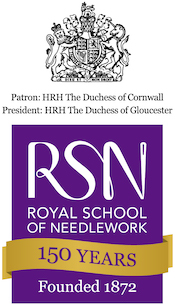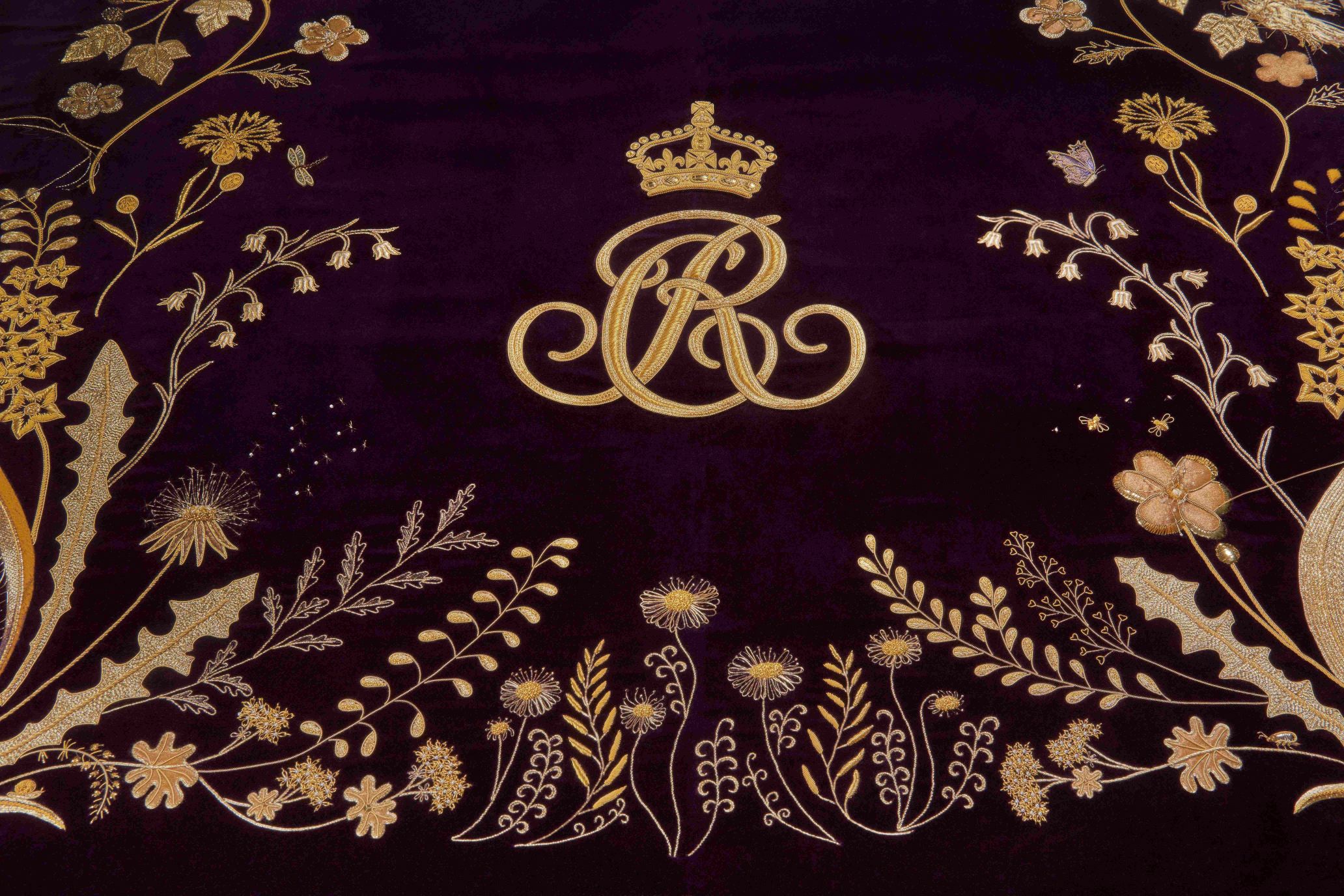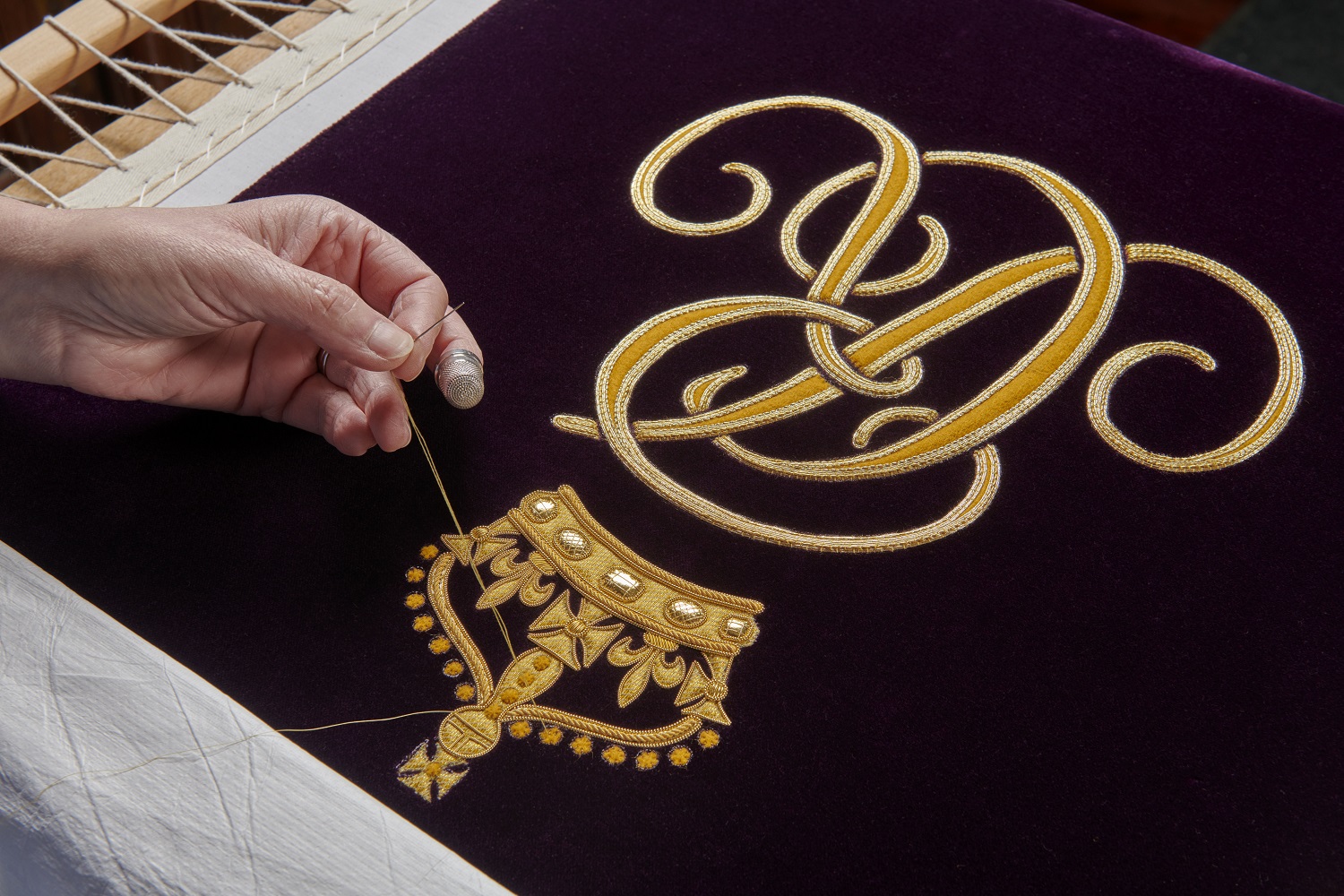Latest news
Keep up to date with all the latest news from the Royal School of Needlework
The Queen’s Robe of Estate
7th May, 2023
We are honoured to have designed and hand embroidered the Robe of Estate for Queen Camilla, worn on departure from Westminster Abbey. The embroidered design of the train draws on the themes of nature and the environment, featuring the national emblems of the United Kingdom, as well as paying tribute to His Majesty The King.
The Robe uses a rich purple velvet, chosen to match His Majesty’s Robe of Estate, and has been embroidered by the Royal School of Needlework using the Goldwork technique, with the design also incorporating Her Majesty’s cypher.
Featured on the robe is Scabiosa, known as pincushion flowers, which is a reference to the Royal School of Needlework’s connection with Her Majesty, and her dedicated support when she became Patron in 2017 as The Duchess of Cornwall.
For the first time, insects including bees, butterflies, a beetle and caterpillar feature on the Coronation Robe, drawing on the themes of nature and the environment and reflecting Their Majesties’ affection for the natural world.
In addition, there are a total of 24 plants featured on the robe, all chosen for their personal associations. These include Lily of the Valley, which featured in Her Majesty’s wedding bouquet and was a favourite flower of Queen Elizabeth II; Myrtle, which represents hope; and Delphinium, one of The King’s favourite flowers and the birth flower of July, the birth month of The Queen. And The Hawthorn also represents the month of May when the Coronation takes place and Oak leaves symbolise strength and longevity.
Also featured is the ‘Alchemilla Mollis’, known as Lady’s Mantle, which symbolises love and comfort, Maidenhair Fern, which symbolises purity, and cornflowers, which represent love and tenderness. The Cornflower also helps to attract and encourage wildlife such as bees and butterflies. The wild flowers are at the bottom of the robe, leading to the four emblematic flowers of England, Ireland, Scotland and Wales at the top.
The Robe itself has been made by Ede and Ravenscroft.
The Royal School of Needlework also worked on the Robes of Estate for the Consort of King George VI, Queen Elizabeth (later known as the Queen Mother) in 1937 and Queen Elizabeth II in 1953.



